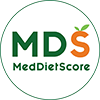Proposed Nutrition Standards for School Foods
School age kids spend most of their day at school, where the foods that are available to them can range from healthy, nutritious foods in the lunchroom to sodas and candy from vending machines. With children at risk for obesity, the Institute of Medicine and the Centers for Disease Control have collaborated to craft a set of guidelines for the foods that children between 4 and 18 should have access to while at school.
The report recommends that the federally-reimbursable school nutrition programs (the school breakfasts and lunches) should be the main source of foods at schools, and that children's opportunities to select other foods should be limited. In addition, those alternative options should themselves be healthy and consist of fruits, vegetables, whole grains, and non-fat or low-fat milk or dairy products.
The approved foods include those that derive less than 35% of their total calories from fat and less than 10% of calories from saturated fats. They should be trans-fat free, get less than 35% of their total calories from sugars (with an exception made for certain types of yogurt), and contain less than 200 milligrams of salt per serving.
Beverages should be either plain water, low-fat or non-fat milk (including flavored milk), 100% fruit juice in appropriate portions, and should not contain caffeine.
Further guidelines include:
- Soda should be limited to high schools and allowed only after the school day has ended.
- Flavored, carbonated, and fortified waters should be limited in order to encourage kids to choose milk, juice, or plain water.
- Sports drinks should be made available to students engaging in "vigorous physical activity" for an hour or more, at the discretion of their coaches.
Fundraising, the committee recognized, is important to many schools and often involve selling candy or other items not on the approved list. Instead, only those foods and drinks that meet the guidelines should be sold at school. Similarly, food and drink marketing should be limited at schools: vending machines should not only be kept out of areas with high student traffic, but they should not have commercial product pictures or logos on them.
These are just the highlights of the report. To download and read the whole report, visit http://www.national-academies.org/
First posted: May 4, 2007




